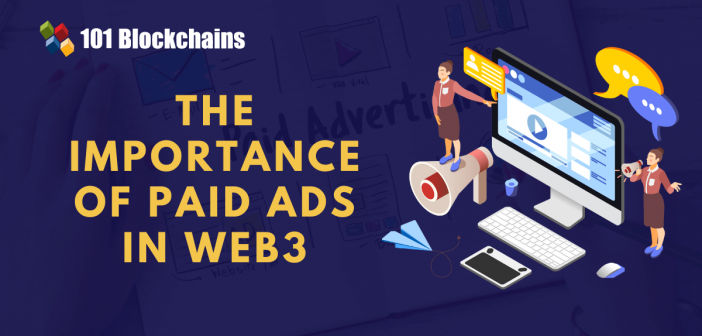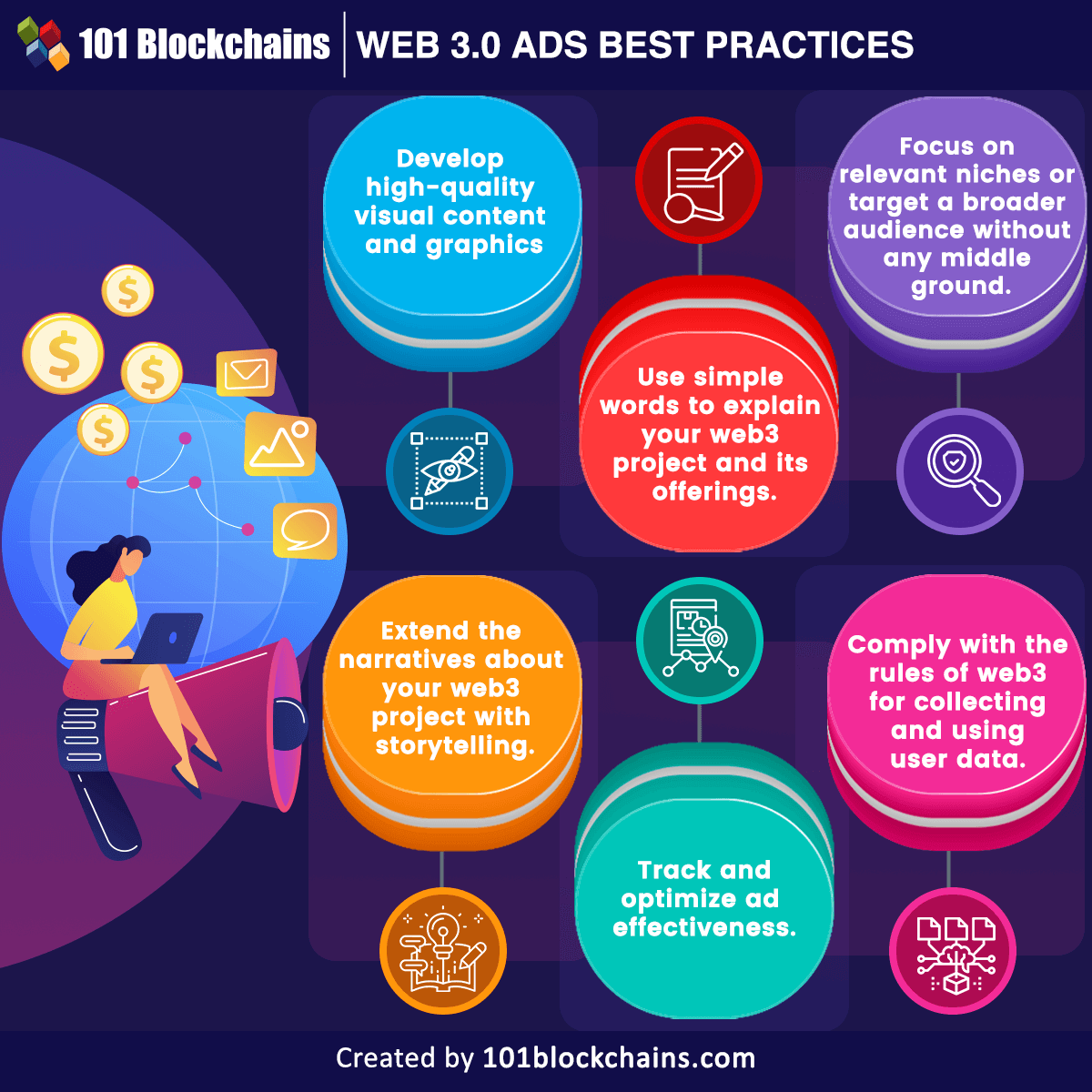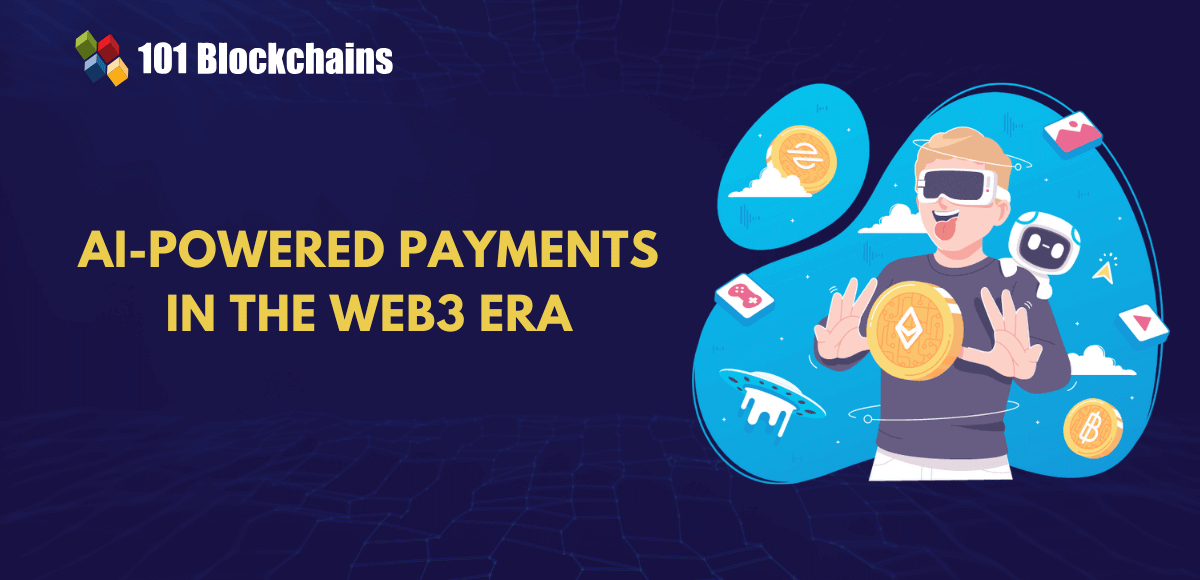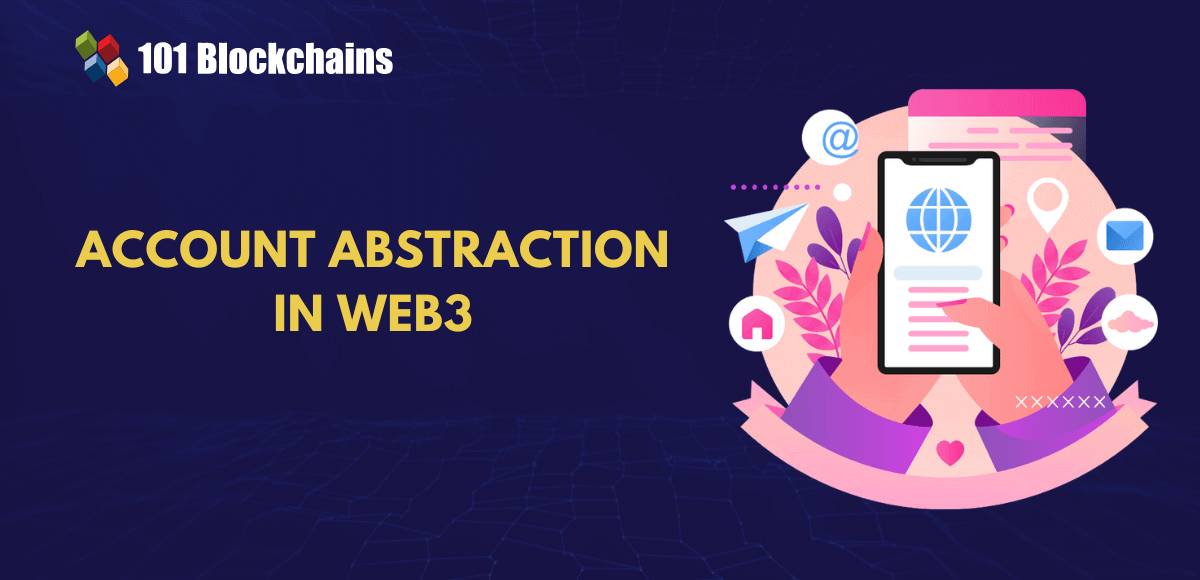Learn how blockchain truly works, master key definitions, and uncover what makes smart contracts so "smart." Dive into the fundamentals, gain valuable insights, and start your blockchain journey today!

- Web3
Georgia Weston
- on March 25, 2023
Why are paid ads important in Web3
Web3 is the new disruptive concept in the world of technology, which presents the vision of an internet without intermediaries. Facebook, Google and Amazon would not control the use of your personal information stored in their databases with web3. At the same time, users would gain more privileges with paid ads in web3 as businesses would have to buy the attention of viewers. How does the concept of paid ads work in the case of web3? The core ethos of web3, such as decentralization, autonomy and transparency, suggest that paid ads could be irrelevant.
On top of it, many arguments against paid ads represent them as an example of a conventional web2 mindset. Paid web3 ads might not seem as attractive as exclusive whitelists, memes, and organic Discord communities. However, paid ads could emerge as a tough and credible solution in the prevailing bear market conditions. Web3 users need something more than manipulated hype, and honesty in paid ads could serve as a viable solution. The following post offers you an introduction to paid ads in web 3.0 and the best practices for using them.
Why Should You Learn about Paid Web3 Ads?
The changes in internet technology have created the foundations for rapid paradigm shifts, such as the web2-web3 transition. Common questions about the practical implications of web3, such as “How will web3 affect advertising?” would point to how paid ads can be relevant in web3. The restrictions in web3 would increase to prevent brands from taking control over user data. Web3 has transformed data collection rules alongside preventing advertisements of digital assets or blockchain technology solutions. On the contrary, paid ads are useful for connecting with users at different stages in the marketing funnels of brands.
Advertising has been around for quite a long time in our world. Online paid advertising started off in 1994 with the launch of the online portal for Wired magazine, HotWired. Online advertising has expanded into a $24 billion business today. Paid ads served as the foundation for the growth of tech giants in web2, such as Facebook. Therefore, the changes in advertising in web3 would also emphasize on requirements for adopting paid ads in advertising strategies. Organic reach for web3 projects could not offer consistency in traffic required for garnering higher adoption rates.
Build your identity as a certified blockchain expert with 101 Blockchains’ Blockchain Certifications designed to provide enhanced career prospects.
Fundamentals of Web3 Paid Ads
The relevance of paid ads in the web 3.0 ecosystem encourages discussion on the basics of paid ads. Why do you need them in web3? What are the definitions of paid ads? The prospects for new ads in web3 with premium pricing do not serve any complexities. You can think of paid ads as the ideal channels for reaching the target audience across different platforms.
Brands could leverage paid ads to boost the publication of their ads for the target audience. One of the common methods followed for paid advertising would refer to Pay Per Click or PPC advertising campaigns. Big web2 brands such as Facebook and Google have developed massive revenue streams through PPC and display banner advertising campaigns.
The use of PPCs for marketing in web3 would involve fees for every click on the ad. Generally, PPC ads are displayed alongside search engine results for relevant keywords, and they have limited written content for targeting user attention. Businesses could set a specific budget for their PPC campaigns and choose the keywords for which they want their ads to appear. The advantage of PPC campaigns for paid ads in web3 is the fact that you have to pay only when someone clicks on the ad.
Another common form of using paid ads is displayed banner advertising, which helps in reaching a broader audience alongside increasing brand awareness. Display banner advertising campaigns use banners on websites and different online platforms which could grab the attention of users and direct them toward your website.
Brands have to pay the platforms which publish their display banners according to the number of impressions of the ad. The new generation of web3 advertisements with PPC and display banner advertising campaigns could open the roads for new collaborations. For example, web3 companies have entered into partnerships with permission-based web3 PPC platforms to communicate ads to NFT owners.
Necessity of Paid Ads in Web 3.0
You should also understand the significance of web3 ads before pursuing the best practices for using them. Web3 is still in a nascent stage and needs to achieve mainstream attention. Paid ads could serve as an exceptional improvement for web3 communities by offering new avenues for incentivizing developers and encouraging new technologies and projects in the web3 space.
The efforts, time, and money required for creating web3 projects also provide another set of reasons for using paid ads. Do you go through the challenges of web development, NFT creation, and smart contract development only to wait for users? Without a clearly organized and coherent marketing plan, you can struggle to spread the word about your new web3 project.
Paid ads could support advertising in web3 at a crucial point in the project lifecycle. The functionalities of paid ads can help web3 creators determine who could see the ads of the project by leveraging filters. Some of the common filters for paid ads in web 3.0 include nationality, objectives, age, gender and other factors. As the world prepares to shift to web3 and address the flaws of web2, it is time to rethink the assumptions about paid advertising and its significance for web3.
Excited to develop a comprehensive understanding of Polygon web3 development? Enroll Now in Polygon Web3 Development Course!
Challenges for Paid Ads in Web3
Majority of web3 creators and web3 companies perceive paid ads as a memoir of the web2 precedents, which they want to challenge through their solutions. Why should web3 projects consider paid ads? The most common approach for ads in web3 follows a low-level ad spending model, which barely delivers any results.
On the other hand, web3 projects could also rely on the speculations of other influencers in the web3 space. You can also find a group of web3 native creators who command significant clout in the web3 community. Blue-chip web3 founders advocate against paid ads with some pressing arguments. Let us find out how paid ads can stand up to every argument against them.
-
Paid Ads Are a Sign of Desperation
One of the common highlights in answers to “How will web3 affect advertising?” draws references to paid ads as a sign of desperation. On the contrary, web3 projects have to face real desperation when they don’t achieve the desired levels of adoption. Without the paid web3 ads, creators are more likely to prefer other malicious measures for garnering hype around the project.
For example, NFT creators could trade their NFT collections with other brands or create bots to purchase their NFTs. On the contrary, paid ads enabled with smart contracts could help in providing a transparent and accurate estimate of return on ad spending. Web3 founders could identify how much sales they have fetched with their paid ads at all stages of the minting process.
Want to get an in-depth understanding of non-fungible tokens (NFTs)? Enroll now in NFT Fundamentals Course.
-
Paid Ads Don’t Work in the Long Term
Another misconception about paid ads refers to the fact that they would not work in the long term. The proven practice for attracting long-term participants in web3 projects focuses on introducing real utility. For instance, people hold on to NFTs with the hope of receiving rewards and airdrops alongside other incentives. Paid ads could serve viable boost for marketing in web3 by targeting a specific audience. As a result, web3 projects could create a more stable and engaged community.
-
Paid Ads Create Negative Impressions
Pushing your ads on the screens of users with every search result is definitely something that can garner hate. In the case of web3 projects, you can expect negative reactions, irrespective of the nature of ads. Remember that online platforms, especially social media, can be hostile places for ads.
All you need to do is focus on marketing your project. In addition, web3 brands could also assume that paid ads could affect their brand integrity and ruin the brand image. On the contrary, the ‘promoted badge’ in your ads would depict the brand’s honest approach to advertising.
Start learning Non-Fungible Token with World’s first NFT Skill Path with quality resources tailored by industry experts Now!
Advantages of Paid Web3 Ads
The advantages of paid ads in web3 also serve as an important highlight in discussions on paid ads for web3 projects. Paid ads could introduce a broad range of benefits for web3 brands, creators, users and ad publishers. Here are the top advantages you can expect with paid ads in web 3.0.
Paid ads offer a broader reach among target audiences in comparison to organic advertising methods.
Paid ads could help in creating targeted advertising campaigns in web3 for catering to a specific audience. Therefore, you are more likely to present your ads in web3 to people who would take an interest in the project.
Another significant aspect of paid ads in the web 3.0 ecosystem is evident in the data collection advantages. The element of the consent of users in sharing their information with web3 brands addresses the setbacks with web2 paid ads. In addition, paid ads in web 3.0 could help brands understand their customers and improve campaign performance.
Paid ads could also play a vital role in increasing the visibility of a web3 brand, among other popular projects. As a result, it can lead to more inquiries, conversions, and sales.
Learn the fundamentals, challenges and use cases of Web3.0 blockchain from the E-book: AN INTRODUCTION TO WEB 3.0 BLOCKCHAIN
Measuring Success with Paid Web3 Ads
The understanding of responses to “How will web3 affect advertising?” show that paid ads could generate positive outcomes for businesses. Paid ads are an effective approach for reaching your target audience alongside promoting products and services. Web3 companies can collaborate with web3 advertisers to reach the ideal target audience with paid ads developed in accordance with the brand’s needs. How can you measure the success of paid web3 advertisement campaigns? You can follow different approaches for measuring results of paid ads. The methods for measuring the success of paid ads in web 3.0 depend on the careful implementation of website tags and data fields.
The common points for measuring the success of web3 ads include conversion rate, click-through rate, cost per click or CPC, and cost per acquisition or CPA. Here is a brief overview of important metrics for measuring the success of paid advertising campaigns in web3.
- Conversion rate refers to the number of people who turn into customers or users on a web3 platform through ads.
- Click-through rates, or CTR, offers a comparative view of the people who clicked on the ad versus the people who saw the ad. The CTR is an indicator of the popularity of an ad among the target audience.
- The Cost per Click or CPC for web3 advertisements refers to the amount you have to pay for each click in PPC ad campaigns. CPC offers an effective metric for optimizing your web3 ad spend.
- Cost per Acquisition, or CPA, is a crucial metric for determining the amount web3 brands have to pay for each new conversion.
Get familiar with the terms related to Web 3.0 with Web 3.0 Flashcards
Best Practices for Leveraging Paid Ads in Web 3.0
The decision for paid advertising in web3 can be a difficult one for many web3 founders. It is important to remember that paid ads are not a miracle tool for making your web3 projects popular overnight. You need to build a strong web3 community along with an in-depth understanding of your project objectives for complementing paid ad campaigns. Here are some important pointers for achieving successful paid ad campaigns in web3.

Please include attribution to 101blockchains.com with this graphic. <a href='https://101blockchains.com/blockchain-infographics/'> <img src='https://101blockchains.com/wp-content/uploads/2023/03/Web-3.0-Ads-Best-Practices.png' alt='Web 3.0 Ads Best Practices='0' /> </a>
- Develop high-quality visual content and graphics.
- Use simple words to explain your web3 project and its offerings.
- Focus on relevant niches or target a broader audience without any middle ground.
- Extend the narratives about your web3 project with storytelling.
- Track and optimize ad effectiveness.
- Comply with the rules of web3 for collecting and using user data.
Build your fluency in Web3 and develop decentralized solutions with the world’s first Web3 Expert Career Path with quality resources tailored by industry experts Now!
Conclusion
The overview of how paid ads in web3 can offer a new channel for promoting web3 projects showcases their importance. You cannot expect a web3 project to gain the attention of users solely on the basis of hype. In the existing bear market conditions in web3, it is difficult to rely completely on manipulative techniques.
Paid ads offer an honest approach to marketing in web3 alongside presenting better targeting and visibility for web3 brands. The exponential growth of web3 projects in recent times has invited discussions about examples of paid ads in web 3.0. Expand your knowledge of web3 and find out where you can use paid ads to achieve desired results in promoting web3 projects now.







